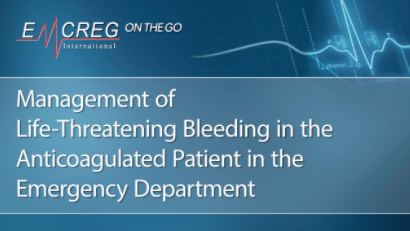Meet the Experts: Managing Life-Threatening Bleeding in Anticoagulated Patients in the Emergency Department
/This program focuses on the management of life-threatening bleeds from a range of specialties: Emergency Medicine, Neurocritical Care, Trauma, and Gastroenterology. A panel of international Emergency Medicine experts will provide perspectives on each of the associated areas of bleeding and relevant clinical cases.
Read More









